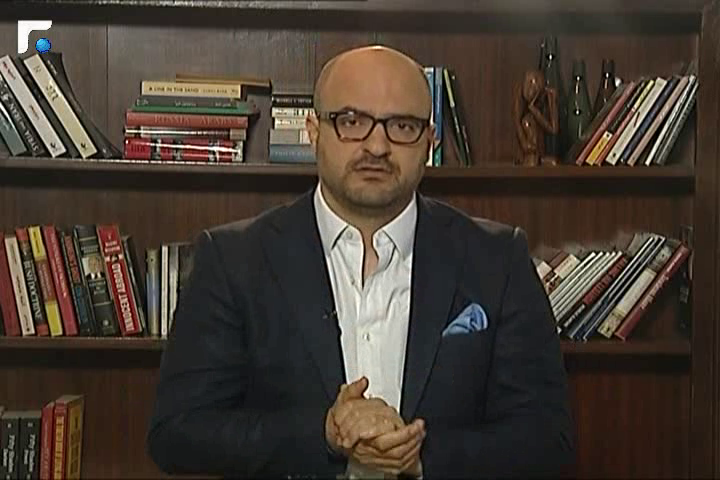Go back to Moussa al-Sadr’s legacy
Nadim Koteich/Al Arabiya/August 14/16
The Lebanese political arena is witnessing a remarkable phenomenon. Political debate is no longer held exclusively between major parties and instead debate now rages within parties, having infiltrated them. There are many reasons for this shift, including the emergence of a new generation of participants in many parties. This generation has grown up in a post-2005 neo-revolutionary political climate. It can be said that this era has been marked by a shift in the sort of politics the Lebanese became used to after 1992. It seems that all parties have been affected by the political climate created by the March 14 movement.
The peculiarity of the March 14 youth seems clear; they distinguished themselves from traditional Lebanese politics, in part due to the deterioration of the political climate in which the movement was born. The March 14 bloc decided the nature of political conflict in the country and pushed certain opponents toward debate, consequently the collapse of sovereign powers’ political projects in Lebanon led to the breakdown of political life in the country.
The Shiite political sphere seems to be as of yet unscathed by the political trend toward internal strife. However, if we are to look closely, the opposite is true
The contrasting project – Hezbollah’s project – went back to its roots without having to endure meaningless debate that is superficial to its priorities and culture.
Ever increasing debates
The most obvious part of the shift currently occurring in Lebanon are the ever increasing debates occurring within political parties, as opposed to between political parties.
A good example is the Free Patriotic Movement (FPM) led by General Michel Aoun. Internal divisions and the sacking of prominent activists mar the party. It seems as though confrontation takes place on almost a daily basis between Minister Gebran Bassil, Aoun’s son-in-law, and other members of the party.
Besides this very public confrontation, another political skirmish is quietly taking place between Bassil and retired Brigadier-General Shamel Roukoz who has a sizeable support base.
For its part, the Future Movement is also suffering from internal divisions that are as clear as the FPM’s.
The deepest division within the Future movement is encapsulated in the example of retired Major-General Ashraf Rifi who took on former Prime Minister Saad al-Hariri in municipal elections in Tripoli. Following the head-to-head, a sharp debate was launched about “Harirism” within the party.
The Kataeb Party is also struggling internally, albeit on a much smaller scale. The disputed inheritance of the party’s leadership from President Amin Gemayel to his son is linked to the overall fragmented state of Lebanese politics and the country’s constitution. Internal strife was apparent when the party decided to withdraw from government in a move that led to three Kataeb ministers distancing themselves from the party. An independent Kataeb member resigned; one protested against the party’s decision and the third minister washed himself of blame by saying he does not associate himself with Kataeb bloc at all!
The Lebanese Forces, arguably the most united Lebanese party and one which is led by Samir Geagea, is also suffering in its main stronghold of Bshari where Geagea’s wife, Setrida, has been criticized. It must be said, however, that internal strife is relatively low-level compared to other parties.
As for the Syrian Social Nationalist Party, it is undergoing a very public crisis due to leadership elections within the party. There is an ongoing struggle between key political players Assaad Hardan and Gibran Areiji. It was widely reported that Hardan attempted to run for a third consecutive presidency. When he was not allowed to do so, he chose to support Ali Qanso in his fourth (non-consecutive) presidency. This resulted in uproar and led critics to describe the president as a puppet in a crisis which is still playing out.
Scratching the surface
The Shiite political sphere seems to be as of yet unscathed by the political trend toward internal strife. However, if we are to look closely, the opposite is true. The main dividing line is the war in Syria – Hezbollah sees it as an existential battle for Shiites, whereas the head of the Amal Movement and Lebanese Parliament Speaker Nabih Berri has distanced himself from this battle. Hassan Nasrallah, Hezbollah’s secretary-general, says that they both would be ready to fight in Syria, however, Berri is keen on denying any involvement by his party in Syria. We have not heard of any Amal members dying in Syria – they are either refraining from battle or Berri is refusing to become involved in order to protect the Shiites.
It seems that this division is due to the legacy of Sayyed Moussa al-Sadr’s stance against Iran’s Khomeini. Sadr was keen on preserving the Shiites interests by stabilizing society and establishing closer ties with other religions, to the extent that he was accused of being on good terms with Israel. In his political discourse, Sadr has relied on Maronite policies, especially the dialogue of coexistence .
The picture of a coherent Shiite community is misleading. The current stability is the result of the balance of power that was established by the Shiite-Shiite civil war in the mid-1980s. Today’s stability is based on the falsification of the ideological roots of Shiites’ relationship with the Lebanese state, putting them under Hezbollah’s control. In August, the month that Moussa al-Sadr disappeared, it is necessary to take a deeper look into his legacy, career, values and attitudes. Shiites should revert to their legacy; it may not be perfect but it will at least root them in their Lebanese belongings, their real belongings, not those which have fabricated by Hezbollah.
**This article was first published in Asharq al-Awsat on Aug. 12, 2016.






















